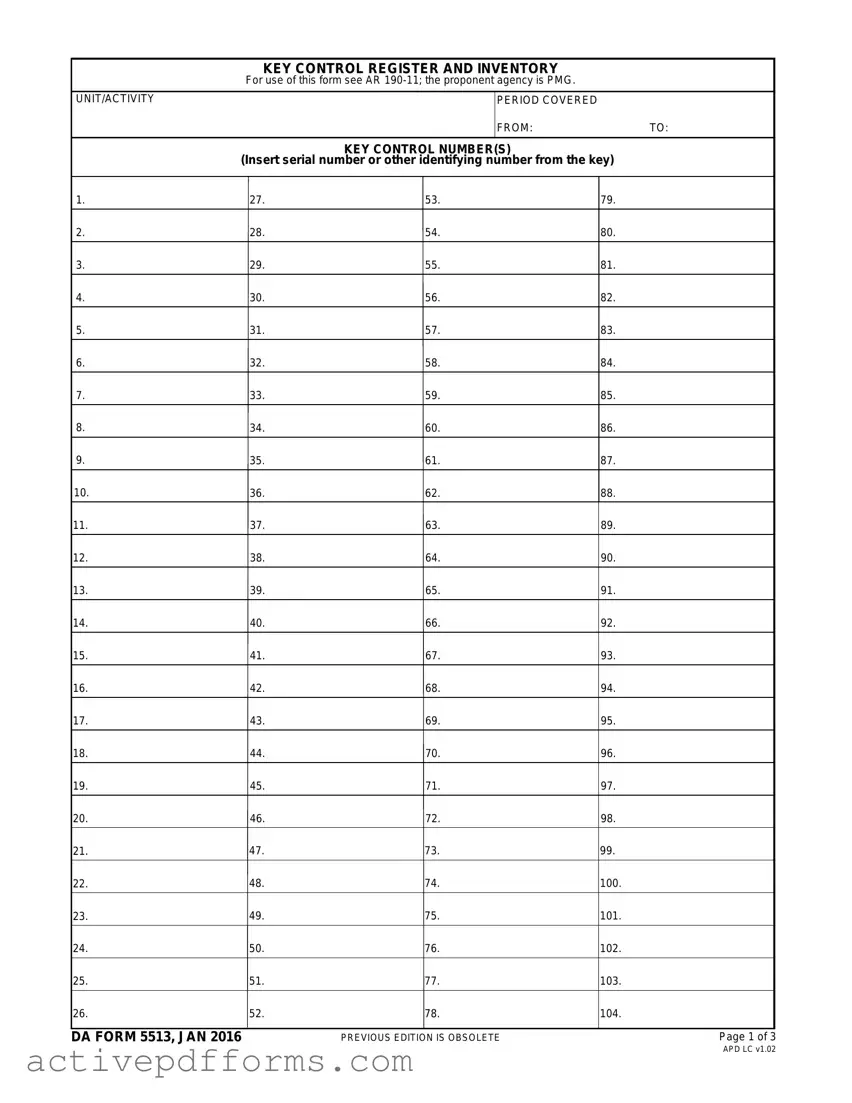In the realm of military operations and security, the maintenance and monitoring of key control are of paramount importance. It is within this context that the DA Form 5513, known as the Key Control Register and Inventory, serves a critical role. Mandated by AR 190-11, with the Proponent Agency being the PMG, this form is a standardized document used across various units and activities to track the issuance, return, and inventory of keys. The form spans a period, detailing key control numbers alongside a comprehensive list, numbering from 1 to 104, for key serial numbers or other identifying features. It not only facilitates the orderly management of keys but also ensures accountability and enhances security within military installations. The form is meticulously divided into sections, including key issue and turn-in records alongside joint and semiannual inventories, thereby providing a structured approach to key control. As keys are issued and returned, the form captures the date, time, and names of individuals involved, thus creating a detailed and auditable record. The DA Form 5513, with its January 2016 edition replacing any previous versions, exemplifies the systematic effort to safeguard critical assets through vigilant key management practices.



